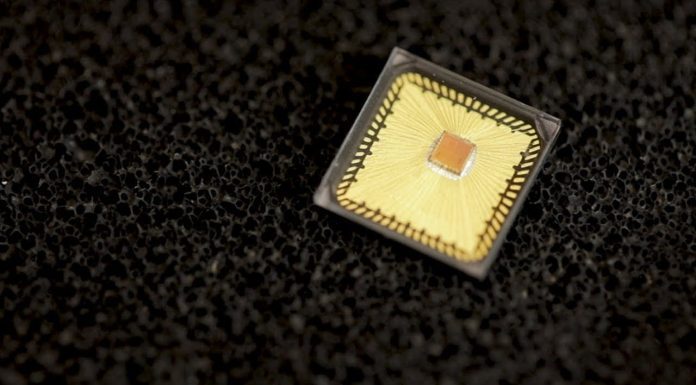You can’t put a price on data. Or can you? A staggering 92% of all internet access now comes via mobile phone, and by 2025 the industry will have reached the once-distant milestone of more than 1 billion active 5G connections. This is good news for operators — more data typically means more users and use-cases, which in turn leads to new opportunities for service monetization. That data, however, comes at a cost.
Every byte that is stored or transferred between data centers and devices costs power, to the tune of 3-7kWh per gigabyte, and those bills have to be paid. According to McKinsey, energy spending was already a significant burden for mobile operators, but in the current climate some large operators have reported their energy cost increases outpacing their sales growth by more than 50%. With data center dependency contributing some 330 million metric tons of carbon dioxide equivalent per year, and AI set to increase data center power consumption by 200 terawatt-hours per year between now and 2030, a re-evaluation is long overdue. So what exactly is causing the operator-energy conundrum, and what can be done about it?
Reducing the energy burden
Operators are already looking at ways to reduce their energy burden and the amount of data traffic they have to deal with. Traffic optimization is one potential avenue, categorizing types of traffic such as video and automatically throttling it or capping the resolution depending on which device it’s being delivered to. A smartphone user, for instance, is far less likely to need high resolution 4k videos while browsing TikTok, whereas a tablet or laptop user might expect a 4k experience when streaming a film. These software layers have a vital role to play, and the technology is constantly being fine-tuned, but what about the hardware?
Mobile networks rely heavily on fixed wireless access to provide an economic backhaul to the gNode Bs. These are dedicated radio links, which cover several kilometers between the radio tower and the networking equipment and fiber point of presence (PoP). As the data rates in the front haul increases (e.g. 4G to 5G), so do the backhaul requirements and both are leading to increased power consumption.
New technologies are therefore needed to reduce the energy per bit and keep the industry on a trajectory to reduce its carbon emissions and lower its energy consumption. As the data rate increases, modems use higher and higher modulation schemes and encoding and decoding techniques. This leads to additional digital complexity and gate count along with larger on-chip and off-chip memory buffers. Without newer techniques, the power consumptions would inevitably increase. That’s where FinFET technology comes in.
The role of FinFET technology
Commercialized FinFET (Fin Field-Effect Transistor) technology, introduced by TSMC over a decade ago, is a semiconductor design that uses 3D transistors to reduce power consumption and increase efficiency compared to traditional planar transistors. By allowing for faster switching speeds and higher density, FinFETs are widely used in advanced digital circuits, and they have proven effective in both digital and radio frequency designs. This technology is now integral to modern chip manufacturing, providing substantial energy savings, especially — as it turns out — in power-sensitive applications like data centers and telecommunications.
FinFET photomasks – high-precision templates used to transfer circuit designs onto silicon wafers through a process called photolithography – can cost somewhere between $1 million and more than $10 million to produce depending on the target node. So with a volume of say, 100,000 parts, there is a need to amortize $10 to more than $100 per part. This can make the business case difficult for these sorts of volumes if considered in isolation, however reductions in chip area are possible, leading to smaller devices and their associated packaging. For example, moving from the bulk CMOS 28nm process to 12nm FinFET, there would be a significant increase in digital density.
The commercial case for FinFET
Looking more broadly at the total system impact, we see a much more healthy business case. For mobile networks and volumes specifically, we need to consider the potential product volumes against the NRE (non-recurring engineering) investment, and also the ongoing savings to operational expenditure (Opex).
If we scale these savings across a complete network, they can be considerable. For example, if we halve a chip’s power consumption – a figure that is entirely achievable by moving to a next generation FinFET process, then we could save c.20W per modem. Simultaneously, we can then also double the throughput as a result of faster switching speeds. Therefore, if we take a network with roughly 50,000 upgraded backhaul links, one would achieve a total power saving of 100KW, and that’s alongside an increase in network capacity. For a large business, the price per kWh would then be in the region of 25p, so that’s a saving of £2,500 per hour or £22M per year if running continuously.
Clearly, it would take time to roll out the upgrades to all sites, but any upgrade must achieve these sorts of savings to provide the maximum benefit to the mobile operator. And this is just one component; the same principle could be applied to all the analog and digital processing which is possible to integrate, completely changing the game for operators.
Energy costs are a serious concern for operators, particularly as our society becomes more data-hungry, but by tackling the issue from a software optimization and engineering perspective, costs can be lowered so that growth and monetization can once again become top business priorities.

